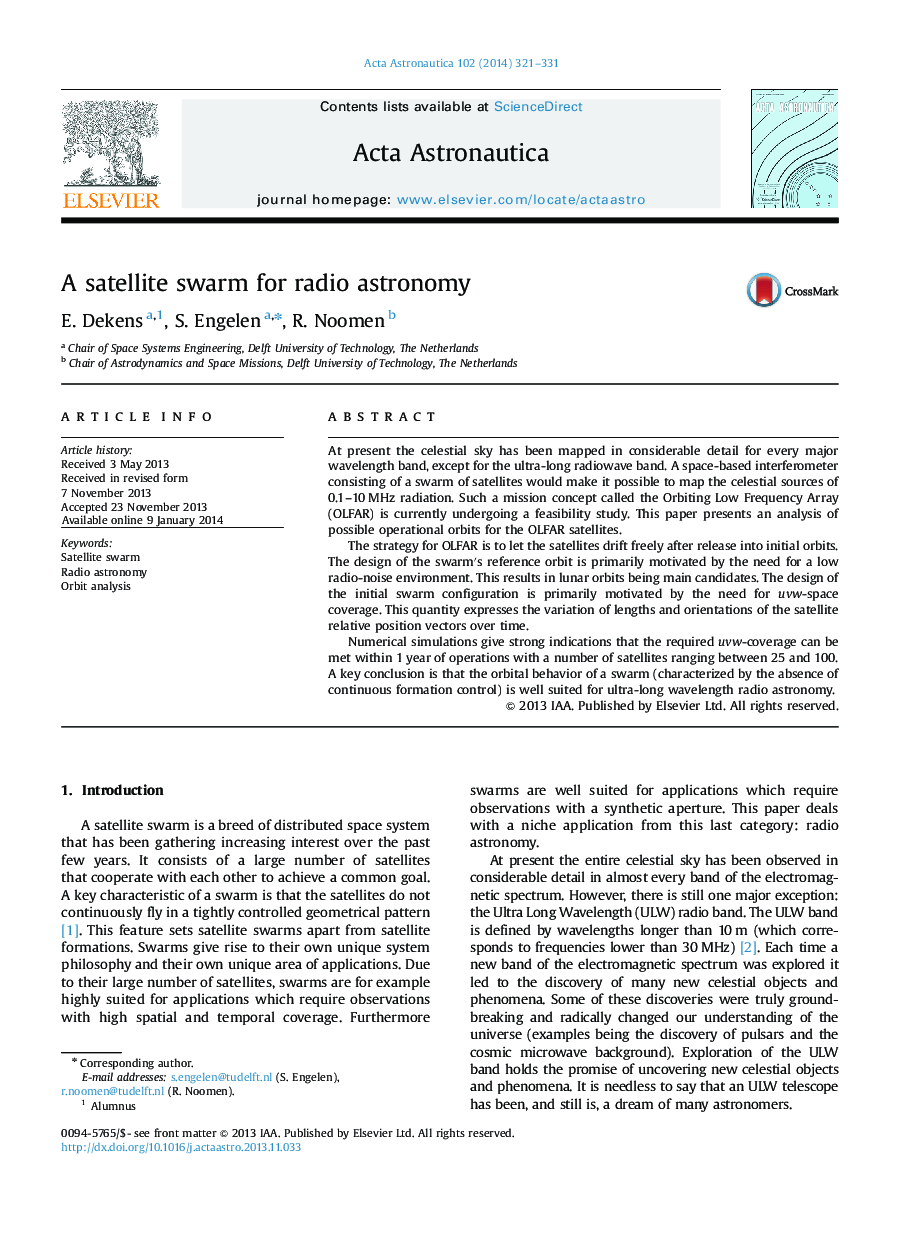| کد مقاله | کد نشریه | سال انتشار | مقاله انگلیسی | نسخه تمام متن |
|---|---|---|---|---|
| 1714611 | 1519950 | 2014 | 11 صفحه PDF | دانلود رایگان |
• Operational orbits of a satellite swarm for radio astronomy are analyzed.
• Lunar orbits are presented as a favorable location for radio-observing satellites.
• Methods for optimizing initial swarm configuration for uvw-coverage are presented.
• Swarm orbital motion is shown to be well suited for radio astronomy.
At present the celestial sky has been mapped in considerable detail for every major wavelength band, except for the ultra-long radiowave band. A space-based interferometer consisting of a swarm of satellites would make it possible to map the celestial sources of 0.1–10 MHz radiation. Such a mission concept called the Orbiting Low Frequency Array (OLFAR) is currently undergoing a feasibility study. This paper presents an analysis of possible operational orbits for the OLFAR satellites.The strategy for OLFAR is to let the satellites drift freely after release into initial orbits. The design of the swarm's reference orbit is primarily motivated by the need for a low radio-noise environment. This results in lunar orbits being main candidates. The design of the initial swarm configuration is primarily motivated by the need for uvw-space coverage. This quantity expresses the variation of lengths and orientations of the satellite relative position vectors over time.Numerical simulations give strong indications that the required uvw-coverage can be met within 1 year of operations with a number of satellites ranging between 25 and 100. A key conclusion is that the orbital behavior of a swarm (characterized by the absence of continuous formation control) is well suited for ultra-long wavelength radio astronomy.
Journal: Acta Astronautica - Volume 102, September–October 2014, Pages 321–331
